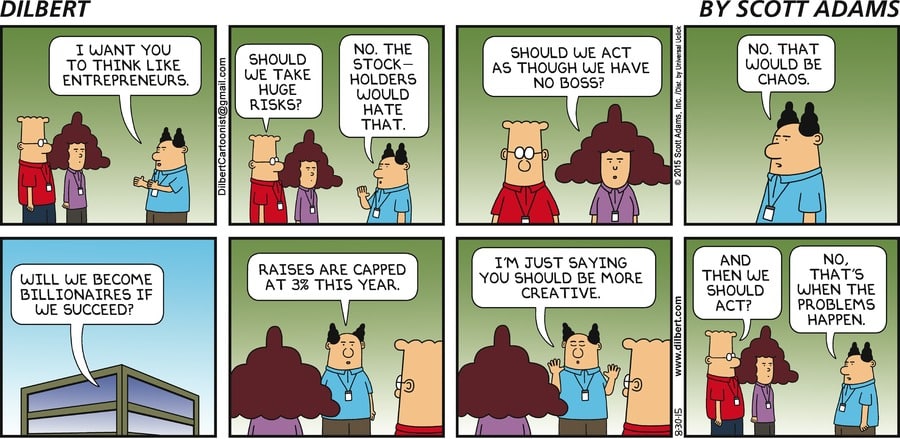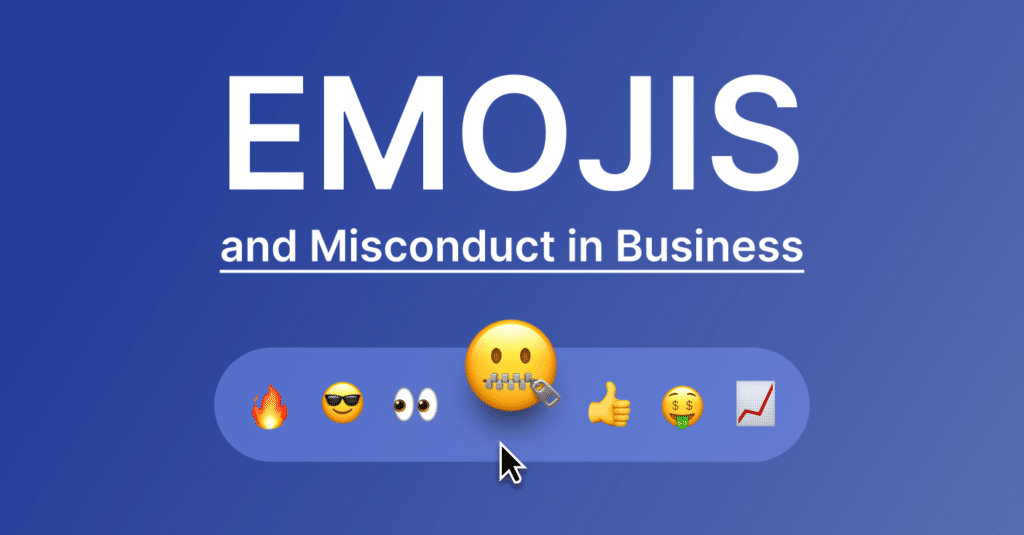Build, Buy or Partner: Which Model Should Be Pursued? (Part 2 of 2)

#1. The Copycat
This involves analyzing, copying, and integrating selective publicly-known concepts, processes, or services within an innovative organization, incorporating these as the incumbent’s own offer. Sounds mean, but isn’t. At a recent finance conference in Frankfurt, a C-level member of a German bank gave a presentation in which he revealed that, because fintech companies are too expensive to buy, his company had decided to ‘copy’ their concepts instead.
The downside to copying is that you can be by definition a follower only, you’re at least second to the market and therefore won’t have a USP. The upside to this approach is that you can take on a proven business model without fear of regulatory issues because there is somebody else already doing it. You may not have a head start but it’s a safe path to take and that’s why it’s become a common route for many banks.
#2. The Lab
If you decide to not only copy but make use of ‘in-house’ innovations you’ll need a team, for simplicity can be incorporated into the existing organizational structure. This is commonly referred to as a ‘laboratory’.
This terminology comes with certain expectations, namely that research carried out in a laboratory is generally unrestricted. That means off limits, with no pressure in terms of expectations. In theory at least. Labs tend to be ‘hip’ designer spaces with table football (also known as foosball by my American friends), bike storage on the walls, comfortable seating area,s and ‘brainstorming hangouts’. I’ve witnessed some established banks attempt to create this type of office environment and it seems somewhat inauthentic – a bit like a ‘masquerade ball’ where once smartly-dressed bankers now arrive to work, tie-less and wearing jeans. It’s difficult to see how the lab scenario could work in reality, where the money is invested in a team that has been given no identified boundaries. And in any case, where do you find the right leaders and team members for such a lab? In the existing organization? From outside the company? An option could be to hire team members of e. g. a (failed) start-up company, creating the target-cultureand then in-house. Is it possible to create and protect an “innovation-culture” within the incumbent organization? Well, I know that HR experts see the possibility of cultures changing overnight. However, personally, I am skeptical: It depends on what direction to change. I would expect therefore that the next (inevitable) round of central cost-saving will put a quick end to the lab.

#3. The Greenhouse
An alternative to building an internal lab would be to build a team outside the established organization, an approach often compared to a ‘greenhouse’ or ‘greenfield’ scenario.
This approach makes it possible for the newly created independent company to create its own culture, set its own rules, and have independent incentives and performance indicators.
This is all well and good, but the financing still has to come from the parent company, and the new supervisory board will likely be made up of representatives of the established company. They alone will understand what’s happening in the new company, while others in the incumbent company may become skeptical about the new subsidiary and be keen to see returns on their investment.
There also remains an important question: Who will lead this new company? And where will the team be drawn from? Is it possible to take an existing employee out of the traditional environment and turn him or her into an ‘entrepreneur’? Could the new team be recruited from the existing employee base?
I don’t pretend to have a complete market overview, but so far, I don’t know of any labs or greenhouses that have proven to be sustainable over the long term. I would be happy to hear about any companies that have been successful with this.
#4. The Take-Over
Getting back to the life cycle, the main features of a start-up are the founders, the team, and the combination of solution-oriented creativity, risk-taking, and entrepreneurial spirit. A lack of competence is often compensated for with above-average enthusiasm and the entire project is seasoned with an element of naivety. How many times have I heard founders (including myself) say, ‘if I’d known it would be so difficult, I would probably never have started it?
For many reasons, good and bad, I seriously doubt the requisite skills can be drawn from within an established organization. Nevertheless, if companies are to take control and shape their future, they have to rely on the property mix described above. Accordingly purchasing or acquiring a controlling interest in a fintech start-up would appear to be a viable solution.
Let’s skip the transaction phase and focus our attention on a period of approx. 9 to 18 months after closing the deal. This is most likely to be when the first problems begin to surface. Having started to get to know each other you will have established initial KPIs and have an indication of where you are going and whether things are on target.
My theory: No business idea is so good it remains outside the remit of the shareholders. Why? Shareholders have an inherent drive to protect their investment. Given that shareholders tend to be risk-averse, can there be a sufficient commitment towards change from the entire incumbent organization? Do stakeholders oppose the proposed changes? Does the fintech company have due processes to meet the minimum criteria of the existing risk strategy? Has professional governance been implemented and lived?
One of the key players in the politically-charged area of M&A is the takeover sponsor. Who is the sponsor and who is managing the relationship going forward? It’s not uncommon that a sponsor has to resign after a period, a takeover or a merger (see the average lifetime segment of a company in my first post). A study by Temple University measured the performance of CEOs over time and found that the “optimal life span” of a CEO is just 4.8 years.
Another key player is the “watchdog” being sent by the incumbent to control and oversee day-by-day activities and the management team of that new group member. That person taking over the (in-official) communication creating a very “special” sentiment at the owner, you might not be aware of. Remember: If you are not at the table, you are on the menu. Important to know: What is the mission statement? What is “character”? Where is that person coming from and where is it heading to after the stop-over at the startup? If that person’s mission statement is, for instance, to restructure and professionalize the start-up, you can be sure that the first reports will draw a very dramatic picture of your company. Why? The worse the starting point, the bigger the success once the mission is completed.
So far, we’ve only discussed the incumbent bank. To be balanced we also need to look at the skills of the innovation team. Do the founders look like good growth managers? This could be in doubt as well. Does the founding team really understand its own life cycle status and behave accordingly? Do the founders understand how and why their team has to change? Do they see that the organizational structure must adapt in line with the increasing size of the company? Are the founding members more like ‘buddies’ than long-term ‘growth managers’? The start-up’s founders need to change fundamentally from entrepreneurs to ambassadors for a big firm with all the increasing day-to-day administrative duties that brings with it. Do they know the golden rule: “The one with the gold makes the rules”. Their new role could see them losing direct customer contact and proximity to market developments, with more emphasis on engaging in synergies, board meetings, committees, minute-taking, etc.
And then the inevitable happens: Failure.

Is it possible to create and protect an “innovation culture” within the incumbent organization?
The ever-present skeptics (both management and stakeholders) will then start to shout, ‘we told you so!’ And they will demand re-action. Leaked media reports may emerge, and the entire takeover process, from management to strategy will be called into question. And questioned it has to be, as part of a regulated system. The founding team will be deluged with multiple audits, and a demand for thousands of strategy PowerPoint slides along with terabytes of Excel files. The entire energy and focus of the leadership team will now be on a defensive struggle while the potential strengths of the plan will be forgotten: these being a desire to translate innovations into customer-centric solutions, a drive to keep up with market demand, the intent to keep the competition in check and inspire employees. This lack of recognition will no doubt demoralize the founding team, especially if it has shareholder status remained itself. It now has to deal with managers with no “skin in the game”, no personal financial investment in the process, and are happy to write the investment off with a stroke of their pen. This is – of course – a worst-case however realistic scenario.
My conclusion? All or nothing!
With 12 years experience as a board member of an innovation-driven subsidiary at an established organization, I cannot see how the fusion of two such inherently different cultures could work. There are many more examples and studies available that back up this position.
The skills, culture, and attitude of a start-up entrepreneur are fundamentally different from the skills, culture, and attitude of a decision-maker in an established business. A few examples:
- When it comes to ‘value creation’ the fintech entrepreneur wants to have that happen at the fintech company. The incumbent organization, on the other hand, can only see value as being accrued within the established setup and for its shareholders.
- Worst case: The incumbent has no understanding of value-creation at all.
- Start-up founders are entrepreneurs with a vested personal interest in their company, having possibly even borrowed money from friends and family. Managers at established organizations are just that: ‘managers’ with no “skin in the game”, aside perhaps from an annual bonus.
- Fintech founders are often accused of ‘greed’ while managers may be seen as ‘envious’.
- While ‘innovation’ is integral to the fintech owner, this can look like a risk to the incumbent organization.
- While an established company is might end up in a never-ending decision-making process, a start-up is more “opportunistic” and less likely to make consistent decisions based on professional analysis.
There is an obvious and well-documented gap that must be bridged. The question is: Who must move to create that bridge? Yes, you can educate a start-up to become like an incumbent company. Is that what the buyer wants? I don’t think so. As a consequence, we have to face the inconvenient truth: there is no way out for the incumbent organization, change must happen there! On all levels, including all stakeholders. That change process neither can be avoided nor “outsourced” to an acquired company. That clearly includes the idea of partnering with an innovative start-up as e. g. a supplier.
Just another attempt to avoid the non-avoidable. Yes, you might appoint a fintech company as a supplier, and agree on clear terms, roles, and responsibilities, creating the necessity for the fintech to pass a strong procurement audit. My guess: Not many start-ups are made for that. This solution would allow the fintech culture continues to be undisturbed to a certain degree. But is it really? The fintech must be capable to catch up with the quality requirements of an established, regulated company, as regards to documentation, service level agreements, price expectations, audits, etc.
Let´s face it: if there is a remaining “innovation-intolerance” at the incumbent, it will not work.
Only once there is that kind of cultural “cooperation- and acquisition readiness” at the incumbent, the acquisition and cooperation of a start-up will be successful. Analyzing the M&A transaction or a cooperation-onboarding process itself, it’s well-known that HR and cultural biases don’t play an important enough role. With the help of an HR specialist and their team, it’s possible to analyze the potential contribution of human resources and organizational development to the M&A process and develop a suitable program that can be used before, during and after such a transaction. The majority of the points addressed might be common sense. But, are they common practice?
Finally: The digital revolution will make a consistent and consequent culture- and thus HR- management more than ever an essential, central point of success. Errors will scale fast in such an environment and can be then detected in the form of depreciation within the owner´s P&L. Given the current fintech valuations, proper HR management seems to be less costly.
Think about it.
Related Articles

Redefining Compliance: Advanced features of Digital Communications Governance solutions
Subscribe to Shield’s Newsletter
Capture everything. Deploy anywhere. Store in one place.


